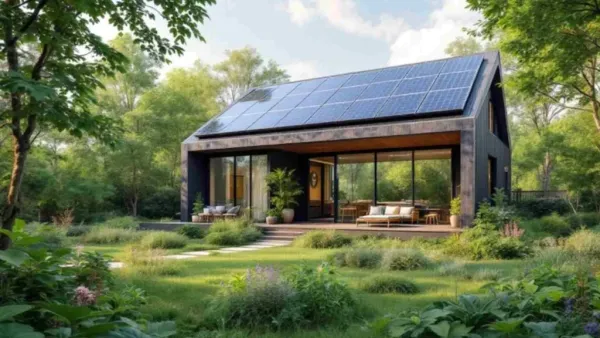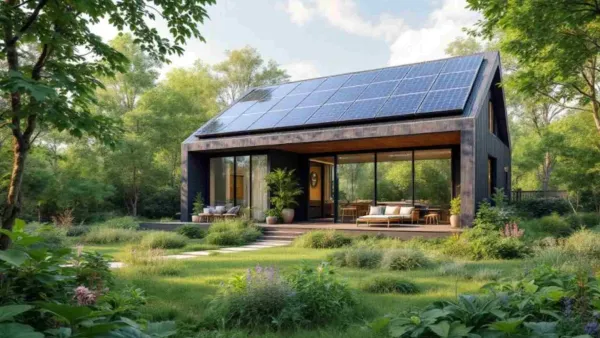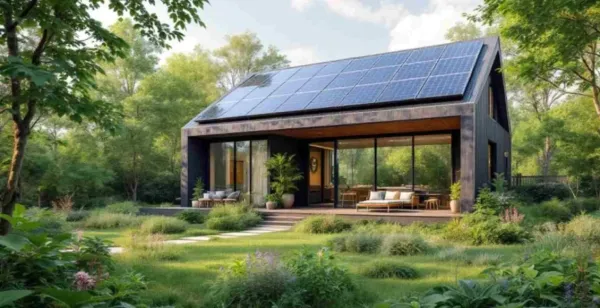Samsung Galaxy S25 Edge Launched: Ultra-Thin Smartphone with 200MP Camera, Snapdragon 8 Elite, Galaxy AI and More



As city spaces shrink, home designs are growing smarter and greener. With more people making the move to bustling urban centers, the demand for smarter, sustainable living has never been higher. Compact urban homes are no longer just about saving space—they’re about saving the planet too. From the furniture we choose to the way homes are built, “eco” is no longer a luxury; it’s a lifestyle.
Smart Furniture That Does More With Less
“Furniture is equipped with advanced technology which allows it to perform multiple tasks,” says Raghunandan Saraf, Founder and CEO of Saraf Furniture. And he’s right. The latest wave of space-saving furniture includes sofa-beds, dining tables that double up as workstations, and benches hiding clever storage. These multi-taskers aren’t just saving room—they’re redefining how we use it.
But it’s not just about function. The materials matter too. Saraf adds, “Nowadays, furniture brands focus on using bamboo, reclaimed wood, cane, jute and even recycled plastics instead of straining the oceans and boasting less eco-friendly living.” The result? Stylish, durable pieces that are as kind to your interiors as they are to the Earth.
And if you’re someone who moves often or lives in a rental? Flat-pack and modular furniture is your new best friend. “Flat-pack and Modular furniture can be tailored according to your space and lifestyle which lessens waste and ensures durability, even when relocating,” explains Saraf. They’re easy to transport, assemble, and reuse—perfect for the ever-adapting city dweller.
Building Better: Greener Homes from the Ground Up
It’s not just the furniture doing the heavy lifting. The bones of urban homes are also getting an eco-upgrade. “Today, builders use fly ash bricks, recycled cement and glass, low VOC paints, and other materials that are non-polluting and protect health,” shares Gunjan Goel, Director of Goel Ganga Developments.
Beyond materials, smart design choices are helping homeowners make the most of tight spaces. “Effective design doesn’t require extra space; it requires efficient planning,” says Goel. Builders are now including bigger windows, skylights, and open layouts that invite natural light and ventilation, reducing reliance on artificial lighting and cooling.
Smarter Utilities for a Greener Tomorrow
The shift to eco-conscious living also extends to utilities. Goel highlights the rise of sustainable add-ons like solar panels, water-saving fixtures, rainwater harvesting, and waste segregation systems. These green utilities are not just budget-friendly in the long run—they make every home a little more independent and a lot more planet-positive.
The Future Is Green (and Smart)
Sustainability and smart living aren’t opposing ideas—they’re partners in making compact urban homes not just liveable, but lovable. As Saraf puts it, “Stylish yet strong furniture can be made with these materials,” proving that being eco-friendly doesn’t mean compromising on aesthetics or comfort.
Whether you’re decorating a shoebox studio or investing in your dream flat, going green isn’t just a trend—it’s the responsible choice. And luckily, it’s never looked better.
-
Kacheguda Railway Station illuminated with façade lighting

-
MP: 19-year-old Dalit killed in Chhatarpur over ration dispute

-
Odisha women take revenge, kill alleged rapist, burn body

-
India Ready To Finalise US Trade Deal By First Addressing Low-Hanging Fruits, Says Piyush Goyal

-
5 financial mistakes freelancers must avoid for long-term success
